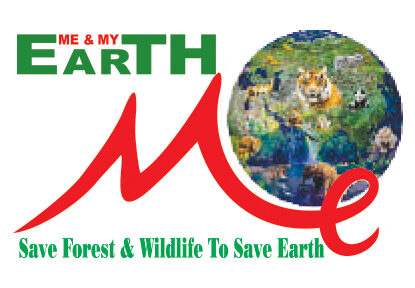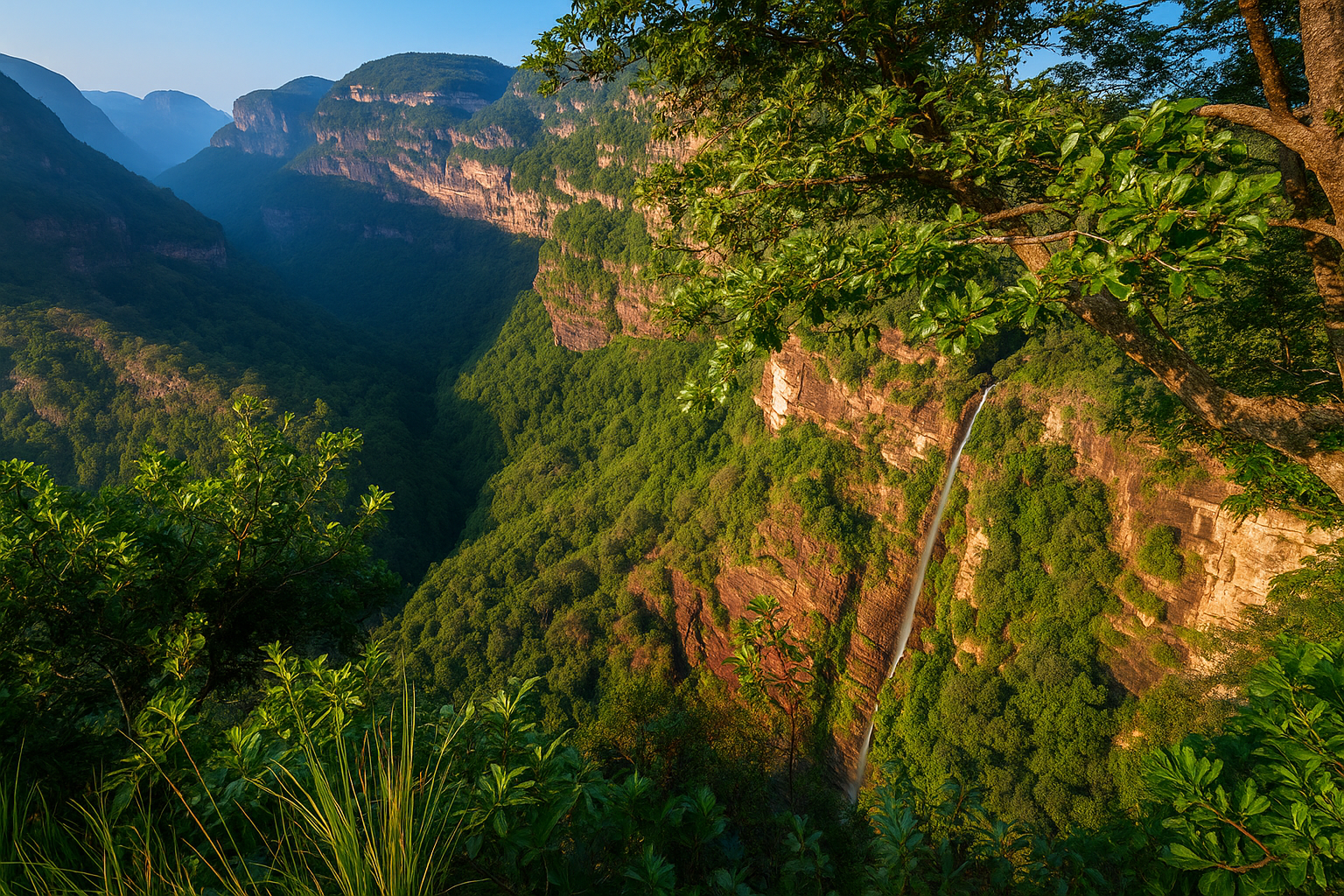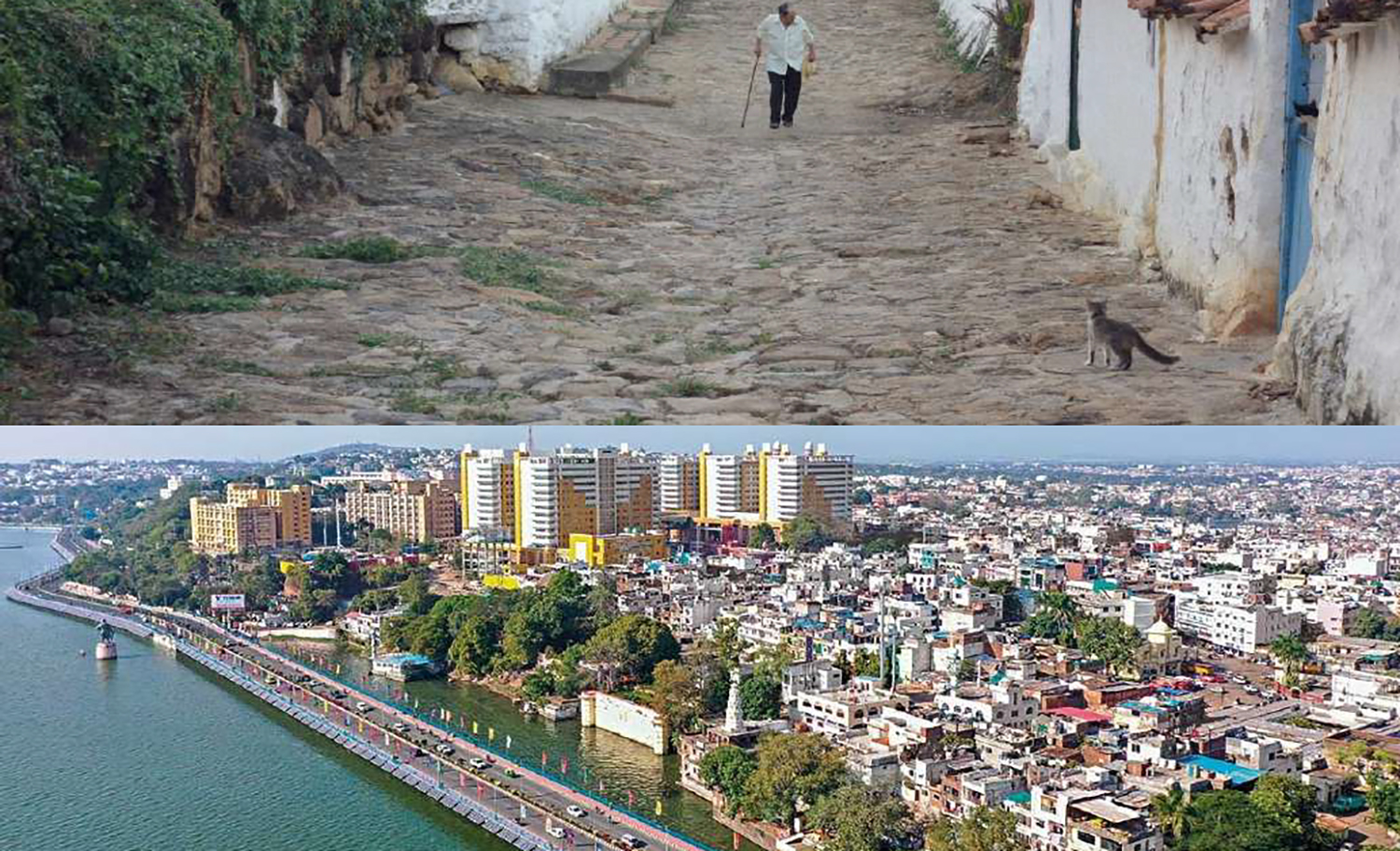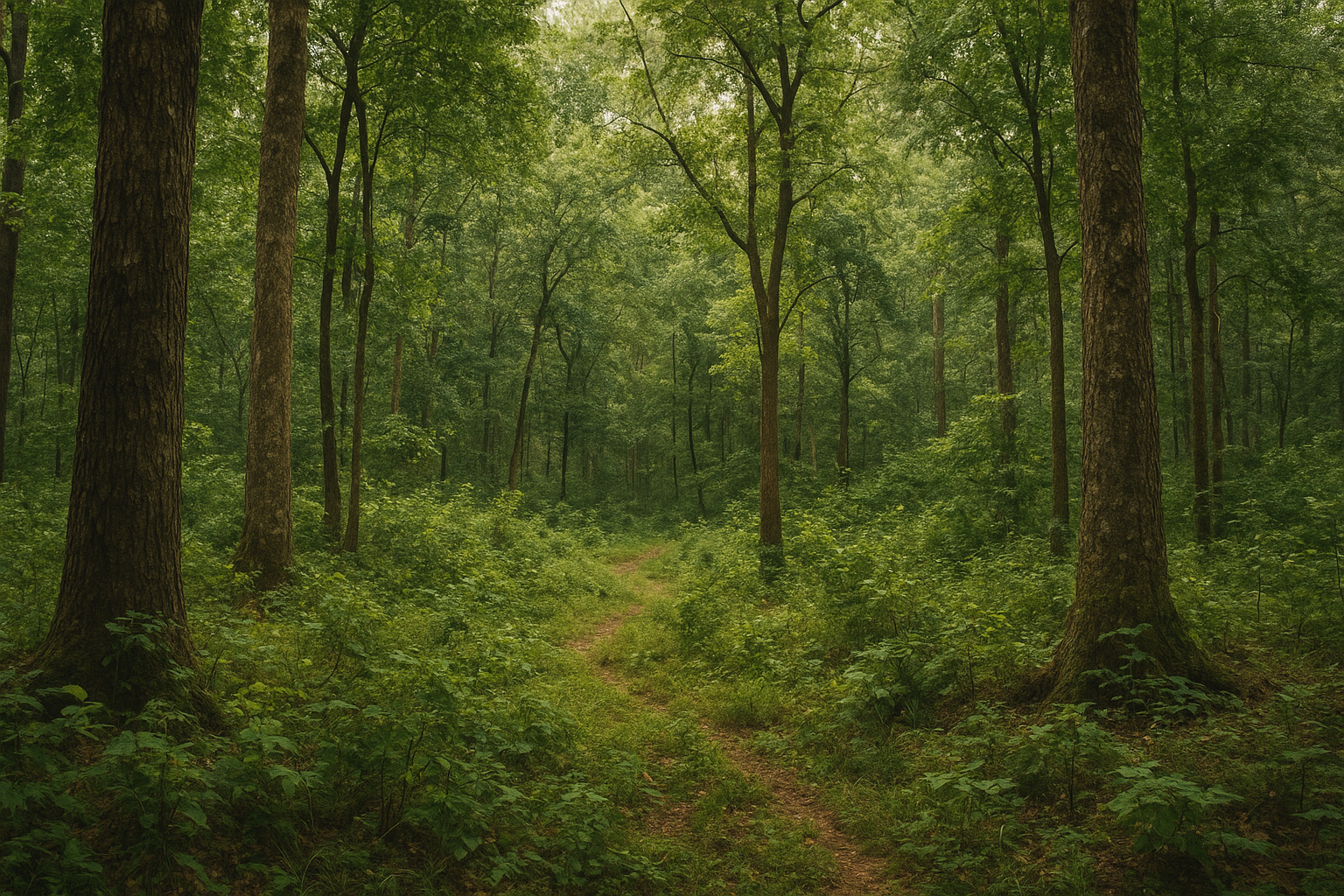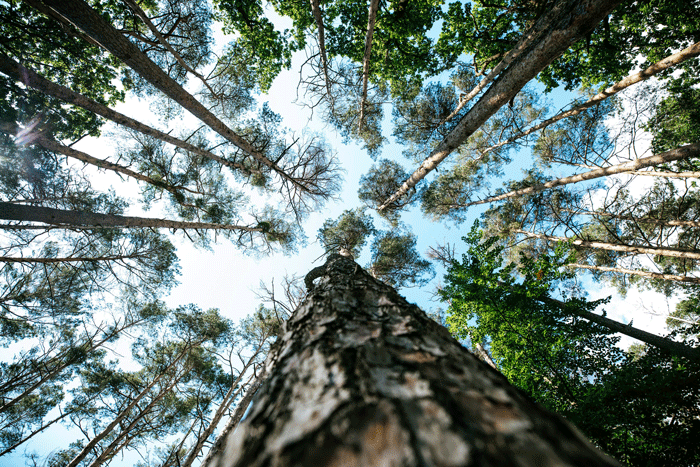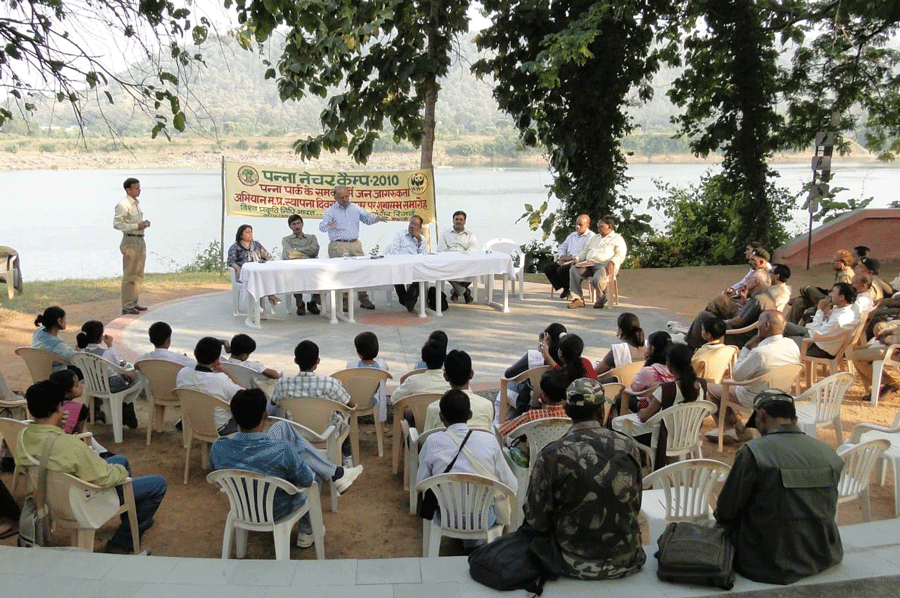“ME & MY EARTH” (Tells about the Nature, Ecology, Earth) is a bilingual, quarterly environmental magazine, registered with the Press Registrar General of India (formerly RNI) under No. MPBIL/2016/69880. Its mission is to raise public awareness on critical issues of environment, forests, wildlife, and biodiversity, carrying forward the message of conservation and sustainability.
As far as we know, Earth is the only planet in our Solar System that sustains life. Humanity—along with countless other species—is privileged to be part of this unique living world. From the tiniest plankton to majestic mountains, from pure glaciers to deep oceans, every element belongs to Mother Earth. We must never forget this truth.
Yet, in our race for development, humans have replaced green landscapes with concrete jungles and filled the air with toxic smoke from unrestrained industries. In the process, we have ruthlessly destroyed our forests—the planet’s lungs—which purify the air and produce the oxygen that has sustained life for millions of years.
It is time we pause, reflect, and act. Let us protect our natural resources and ensure that the beauty and balance of this planet remain intact for generations to come.
Mission and Vision
ME & MY EARTH is a bilingual quarterly magazine published from Bhopal, India, with a mission to bridge the knowledge gap on environmental challenges and sustainable practices to manage Forest & Wildlife. It blends with scientific insight of cultural narratives to promote eco-conscious living, spotlighting issues like climate change, deforestation, wildlife conservation, and traditional Ayurveda. With content in both English and Hindi, it reaches a wide audience—from environmentalists and educators to students and policymakers—especially across semi-urban and rural India.
Our Publication Profile:
- Established: 2016 | RNI No. MPBIL/2016/69880
- Frequency: Quarterly (34 issues published so far)
- Languages: English & Hindi
- Formats: Print and Digital A-4 (PDF)
- Distribution: Primarily in India, with focus on Madhya Pradesh
- Contact: 📞 9755936100 | ✉️ jkc153@gmail.com |
- Website: www.https://meandmyearth.yesearth.org/
🌍 Visit us: https://meandmyearth.yesearth.org/share-feedback/

Publisher Owner and Editor of
“ME & MY EARTH”
Content Structure & Editorial Themes:
Each issue offers a rich truth of environmental education and cultural reflection, typically organized into:
Environmental Issues: Climate change, pollution, sustainable development—often with local case studies.
Forest & Wildlife Conservation: Biodiversity, endangered species, and forest ecosystems.
Ayurveda, Traditional Knowledge: Ancient and present Indian medicinal wisdom.
Cultural Heritage: Essays on eco-aligned Indian traditions and practices.
Current Events: Covers environmental impact, illegal tree felling, hunting and forest land encroachment.
Earth related issues: Coverage of Global warming, Pollution, declining Ocean health.
Editorials & Opinions: Contributions from scientists, activists, and community leaders.
Technical & Design Specifications:
- Size: A4 format, 48–64 pages per issue
- Printing: High-quality paper; color for visuals, B&W for text-heavy sections
- Typography: Readable fonts—Arial/Times New Roman (English), Mangal/Kruti Dev (Hindi)
- Design: Clear headings, info graphics, bilingual layout (parallel columns or separate sections)
- Advertising: Minimum focus on commercial adds , focus on eco-friendly brands , nature lovers, NGI, NGOs.
Editorial Process:
Based in Bhopal, the editorial team includes environmental experts, journalists, and cultural historians. Each quarterly cycle involves:
- Content Planning: Based on current issues and reader feedback
- Research & Writing: By staff and guest contributors
- Editing & Design: Ensuring clarity and accuracy using tools like Adobe, AI, InDesign.
- Printing & Distribution: Via certified facilities, digital format and postal channels
- COVID-19 Protocols: Maintained uninterrupted publication during the pandemic
*Publication: Published from Bhopal A quarterly (four issues per year). So far it’s 33 issues have been published.
- Languages: English and Hindi, with content tailored to reflect regional and cultural nuances.
- Format: Printed in Print and Digital formats.
- Registration: RNI No. MPBIL/2016/69880, ensuring compliance with Indian publishing regulations.
- Contact Information: Readers can reach us via (9755936100) or email (jkc153@gmail.com). The official website, www.meandmyearth.com, serves as a hub for updates and subscriptions.
- Distribution: Primarily distributed in India, with a focus on regions like Madhya Pradesh, where the magazine is based. It is available through subscriptions and online.
Content Structure and Themes
ME & MY EARTH is organized to cover a broad spectrum of topics, ensuring a comprehensive approach to environmental education. Each issue typically includes the following sections:
- Environmental Issues: Articles on climate change, pollution, and sustainable development, often grounded in scientific research and local case studies. For example, the magazine has highlighted issues like tiger conservation in Madhya Pradesh, reflecting regional environmental concerns.
- Forest and Wildlife Conservation: In-depth features on biodiversity, endangered species, and forest ecosystems, emphasizing the need for conservation efforts.
- Ayurveda and Traditional Knowledge: Sections dedicated to India’s ancient medicinal systems, exploring their relevance to modern environmental and health challenges.
- Cultural Heritage: Stories and essays on ancient Indian practices and their alignment with sustainable living, fostering a sense of cultural pride and environmental responsibility.
- Current Events: Coverage of recent environmental developments, such as the impact of events like global warming, climate change, Covid impacts on the environment, Illegal tree felling, forest land encroachment, Ayurveda and issues related to the mother earth.
- Editorials and Opinions: Thought-provoking pieces by the Editor, environmentalists, scientists, and community leaders to stimulate discussion and inspire action.
The magazine balances technical content with accessible language to cater to both expert and lay audiences. Visual design, layout and architecture: such as photographs of wildlife, forests, and cultural landmarks, enhance the reading experience and underscore the magazine’s focus on the planet’s beauty.
Target Audience
ME & MY EARTH targets a diverse readership, including:
- Environmental Enthusiasts
- Students & Educators and our general public
- Policymakers, Administration, Judiciary and NGOs
- Researchers & Education Hubs.
- Public interested in Ayurveda & Indian culture
Selling Points:
- Environment concerns.
- Integration of filed works with science and tradition
- Focus on regional issues mentioned above
- Environment & Biodiversity Conservation advocacy
Challenges and Future Planing
ME & MY EARTH faces challenges typical of niche publications, including limited funding, competition from digital media, and logistical issues in print distribution. To address these, the magazine could explore:
- Interactive Content: Incorporating QR codes or online portals for reader engagement, such as forums or webinars.
- Partnerships: Collaborating with environmental NGOs or educational institutions to expand its reach and impact.
- Sustainability Practices: Adopting eco-friendly printing methods to align with its environmental ethos.
The website https://meandmyearth.yesearth.org/ is a rich resource focused on environmental, forestry, wildlife, agriculture, biodiversity, and sustainable land management. It features into variety of articles, abstracts, and studies related to:
- Biodiversity within the environment
- Ayurveda practices and their benefits
- Important native tree species like Mahua (Madhuca longifolia)etc.
- Soil testing and its role in modern agriculture
- Climate change & global warming issues and mitigation.
- Wildlife conservation studies, observation, research papers.
- Cultural and social perspectives on environmental stewardship
- Earth related concerns and the importance of forests n wildlife in the Indian scenario.
Our content are a blend of scientific research, environmental awareness, and cultural reflections, often presented in both English and Hindi.
We trust, you can help us explore specific topics on the site to share and summarize your articles, or guide us on how to use the information for study or research purposes. So as, we can do the same for you. Just let me know!
Our Target & Motto:
Since we are facing typical niche in publication hurdles in funding, we plan to digitize its distribution to curtail minimum usage paper work.
ME & MY EARTH plans to:
- Introduce interactive content (QR codes, webinars)
- Build partnerships with NGOs and academic institutions
- Adopt eco-friendly practices to minimize paper usage to digital format.
Citations:
Posts pagination https://meandmyearth.yesearth.org/
Editorial Team:
FOUNDER, PUBLISHER & EDITOR: Jagdish Chandra, IFS*, M.P.
CONSULTING ADVISOR: Abhilash Khandekar, Veteran Journalist The Lokmat Newspaper
CO-EDITORS: Kamal Chandra Sangita Saxeни.
SUB-EDITORS: Dr. I.N. Singh, IFS*, Chhatisgarh, Dr. Ajay Shankar IFS*, M.P.
EDITORIAL CHIEF: Dr. R.N. Saxena, IFS*, MP, Dr. Uma Shankar Singh, IFS*, U.P.
SCEINTIFIC ADVISORS: Dr.S.P. Singh Professor IIFM M.P., Dr. Anupam Shrivastava HOD & Scientist,
Dr. M.C. Sharma, IFS*, M.P., Dr. R. G. Soni, IFS*, M.P.
CONSULTING ADVISOR: Vikash Singh Baghel Publisher SNHC Journal, M.P.
LAW ADVISORS: Nandini Gothalwal, Advocate, Green tribunal, Bhopal
FINANCIAL ADVISOR: Vijya Adalatwale Charterud Accountant, Bhopal
PUBLICITY CELL: US. Rastogi IFS*, M.P., Puneeet Chaturvedi Director Xtreem Adenture, Bhopal, Grruvesh, Bharti Communications, Bhopal MP.
*Team members marked with (*) are retired from Indian Forest Service
Conclusion
ME & MY EARTH is a vital voice in India’s environmental discourse, blending scientific rigor with cultural storytelling to educate and inspire. Its bilingual format, focus on local issues, and commitment to sustainability make it a unique publication in the environmental magazine landscape. By continuing to innovate and adapt to modern publishing trends, ME & MY EARTH has the potential to amplify its impact and foster a deeper connection between readers and the planet.

